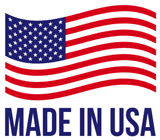Water fountains are a great way to stay hydrated and have fun at the same time. They provide water in a convenient location, but they can also be dangerous if not properly maintained. In this article, I’ll explain how your local water fountain is regulated by the EPA and what you should know about keeping yourself healthy while traveling around the world.
Water Fountains Around the World
Water fountains have been around for centuries. They’re found all over the world, and some of the most famous ones are in Europe and the United States.
In Asia, Africa and Australia they’re popular too!
Water Fountains in the U.S.
There are over 3,000 water fountains in the U.S. Most of them are in schools and parks. The EPA does not regulate these types of facilities because they’re considered “home-owners’ associations.”
However, many people do not know that there is no federal regulation for how often your local water fountain needs to be cleaned or maintained by your gardener or caretaker. This can lead to dangerous situations where pathogens may become airborne which could cause serious health problems if inhaled by children at school or daycare centers with inadequate ventilation systems (or even homes).
City water is regulated by the EPA.
The EPA sets standards for drinking water, wastewater and surface water. The EPA also regulates the discharge of industrial waste into waterways.
Water from a fountain is considered to be safe if it meets these standards:
The City of Boulder’s Water Quality Standard (Boulder Municipal Code) states that “the chemical constituents identified in this chapter shall not cause harmful effects on aquatic life or humans.” This means that the water from your fountain does not have chemicals added to it during treatment or storage which could cause harm to anyone who drinks it or uses it as an aqua source for bathing.
Over time, regulations have made water fountains much safer and more sanitary.
In the 1800s, water fountains were often contaminated with bacteria. The EPA has regulated public water sources in the United States since 1972 and has made it mandatory for them to meet specific standards. These include:
- The pH level must be between 6 and 8 (7 is neutral)
- There should be no visible algae growth on the sides of the fountain or any other surface where people drink from it
- No dead animals or insects can be present in your drinking water
Water fountains can be contaminated with bacteria.
You might assume that the water from a faucet or fountain would be safe to drink, but unfortunately, it’s not. Water fountains can become contaminated with bacteria, which often don’t get cleaned regularly and can cause illness when consumed.
Bacteria in public drinking fountains include E. coli, salmonella, and other pathogens responsible for causing sickness or even death if ingested by people who are ill enough to develop symptoms such as diarrhea or vomiting. The Centers for Disease Control and Prevention (CDC) reports that between 2011-2012 there were 32 outbreaks caused by the consumption of contaminated water from public places; these outbreaks resulted in more than 1 million cases of illness across 29 states.
Many water fountains are poorly maintained.
Many people who have a water fountain in their homes do not know how to take care of it. They may think that it is easy and that they should just fill it up every day or every other day, but there are some things you should know about taking care of your pump:
- Water fountains can become contaminated with bacteria, viruses, and parasites. These types of contaminants can cause sickness in children or adults who drink from them regularly. This is especially true if the pump has been used for years without being cleaned properly or maintained properly by someone who knows what they’re doing!
- Dirty pumps can also make people sick too – especially if they contain dirt inside them (which most likely does). If you’re worried about getting sick from drinking from a dirty fountain then don’t do so until after reading this article at least once more!
Private water sources don’t need to meet EPA standards.
The EPA is the federal government’s official agency dedicated to protecting human health, the environment, and workers. They have set standards for water quality that ensure it meets a certain level of safety for anyone who uses it.
In short: private water sources don’t need to meet EPA standards. And if they do meet them, you can rest assured knowing your water source is safe—as long as there aren’t any contaminants present in your supply (which would mean something like lead or arsenic).
Pregnant women should avoid drinking from water fountains.
Water fountains are a great way to hydrate, but pregnant women should avoid drinking from them. Drinking water from a fountain can be contaminated with bacteria and other contaminants.
When you’re pregnant and want to stay safe, it’s important not only to avoid potentially hazardous foods but also to avoid exposing yourself or others around you (especially infants) to them. That’s why we recommend that pregnant women don’t drink anything but breast milk or formula while they’re expecting!
Keeping a reusable water bottle with you can help you avoid drinking from a water fountain.
If you’re worried about the safety of drinking water from public fountains, there are a few things you can do to make sure your drink is as safe as possible.
- Keep a reusable water bottle with you at all times. This will help keep the plastic out of landfills and save money in the long run by avoiding having to buy disposable bottles each time you need some refreshment!
- Use a reusable water bottle at home instead of buying one every week or two (or more!). You may also want to invest in some spring water when traveling so that it doesn’t have any chemicals added into its production process—this will help ensure that no harmful chemicals end up being leached out into whatever liquid ends up coming out of those taps!
- Avoid drinking from public fountains whenever possible—instead opt for bottled products like the ones made by Sigg and Lifefactory which are both eco-friendly options when traveling abroad!
It is recommended that you carry your own water with you or purchase spring water in eco-friendly containers when traveling to avoid the potential risks of drinking from public fountains.
If you are traveling to a city where there is no clean water source, it is recommended that you carry your own water with you or purchase spring water in eco-friendly containers when traveling to avoid the potential risks of drinking from public fountains.
Conclusion
We hope that this article was helpful in helping you understand the potential dangers of drinking from public water fountains. As we’ve mentioned before, there are many other factors to consider when choosing where to spend your time and money outside of just worrying about the safety of water sources. But what if you have no choice but to drink from public sources? Well… it’s up to you! Just be mindful of your surroundings and what is going on around you so that no one gets hurt as a result of your actions






